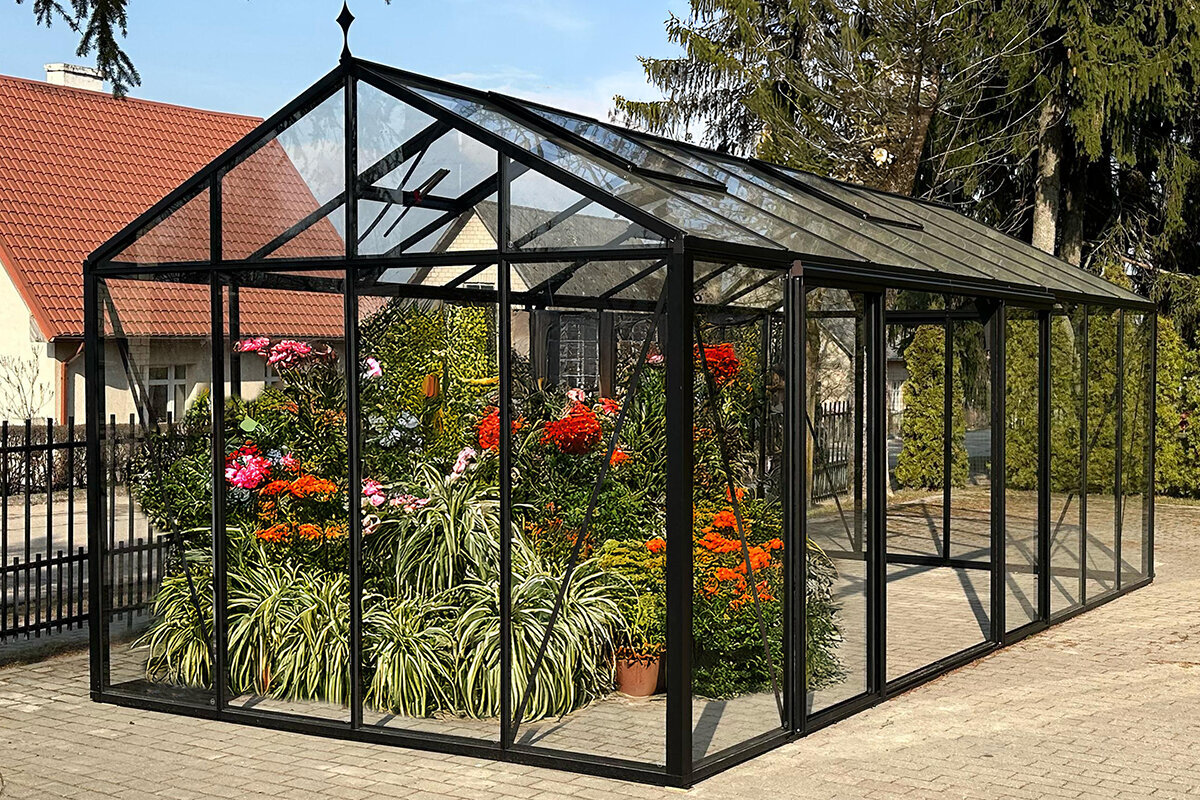How to Make Your Greenhouse More Eco-Friendly

<p>Creating an eco-friendly greenhouse is a rewarding endeavor that benefits both the environment and your gardening experience. By integrating sustainable practices and materials, you can reduce your greenhouse's carbon footprint, conserve resources, and cultivate a healthier ecosystem for your plants. At <strong>Bloomcabin</strong>, we specialize in aluminum greenhouses that align with these eco-friendly principles, offering durable and sustainable solutions for gardeners of all levels.</p>
<article>
<h2>1. Choose Sustainable Materials</h2>
<p>The foundation of an eco-friendly greenhouse lies in the materials used for its construction. <strong>Aluminum</strong> is an excellent choice due to its durability, recyclability, and minimal maintenance requirements. Unlike wood, which may require chemical treatments to prevent decay, aluminum is naturally resistant to rust and corrosion, ensuring a longer lifespan without the need for harmful preservatives.</p>
<h2>2. Optimize Energy Efficiency</h2>
<ul>
<li><strong>Insulation:</strong> Proper insulation minimizes heat loss during colder months. Materials such as polycarbonate panels offer excellent thermal properties while allowing ample light transmission.</li>
<li><strong>Solar Orientation:</strong> Position your greenhouse to maximize natural sunlight, reducing the need for supplemental lighting and heating.</li>
<li><strong>Thermal Mass:</strong> Incorporate materials like water barrels or stone flooring to absorb heat during the day and release it at night.</li>
<li><strong>Ventilation:</strong> Ensure adequate ventilation to regulate temperature and humidity, preventing overheating and promoting healthy plant growth.</li>
</ul>
<h2>3. Harness Renewable Energy</h2>
<ul>
<li><strong>Solar Panels:</strong> Installing solar panels provides a clean energy source for heating, lighting, and ventilation systems.</li>
<li><strong>Rainwater Harvesting:</strong> Collecting rainwater for irrigation conserves potable water and reduces runoff.</li>
<li><strong>Wind-Powered Ventilation:</strong> Small wind turbines can power ventilation systems efficiently.</li>
</ul>
<h2>4. Implement Water Conservation Techniques</h2>
<ul>
<li><strong>Drip Irrigation:</strong> This method delivers water directly to plant roots, reducing evaporation.</li>
<li><strong>Mulching:</strong> Applying mulch helps retain soil moisture, suppress weeds, and regulate soil temperature.</li>
<li><strong>Self-Watering Systems:</strong> Utilize self-watering containers or soaker hoses with timers to reduce water waste.</li>
</ul>
<h2>5. Utilize Eco-Friendly Pest and Disease Management</h2>
<ul>
<li><strong>Integrated Pest Management (IPM):</strong> Use beneficial insects like ladybugs to control aphid populations naturally.</li>
<li><strong>Companion Planting:</strong> Plant species that deter pests or attract beneficial insects.</li>
<li><strong>Physical Barriers:</strong> Row covers or netting can protect plants from pests without chemicals.</li>
</ul>
<h2>6. Reduce, Reuse, Recycle</h2>
<ul>
<li><strong>Composting:</strong> Recycling plant waste into compost enriches soil fertility.</li>
<li><strong>Upcycling Materials:</strong> Repurpose materials for plant supports or decorative elements.</li>
<li><strong>Biodegradable Seed Pots:</strong> Use coconut coir, peat, or paper instead of plastic.</li>
</ul>
<h2>7. Monitor and Adapt</h2>
<ul>
<li><strong>Environmental Monitoring:</strong> Utilize sensors to track temperature, humidity, and soil moisture.</li>
<li><strong>Education and Community Engagement:</strong> Share knowledge and collaborate with fellow gardeners.</li>
<li><strong>Sustainable Garden Planning:</strong> Rotating crops and planting seasonal vegetables promote biodiversity.</li>
</ul>
<h2>8. Invest in a High-Quality Greenhouse for Long-Term Sustainability</h2>
<p>While many factors contribute to making a greenhouse eco-friendly, starting with a high-quality structure is crucial. A poorly built greenhouse may require frequent repairs or replacements, increasing waste. <strong>At Bloomcabin</strong>, we prioritize durability, efficiency, and sustainability in our greenhouse designs.</p>
<h2>9. Grow More, Waste Less</h2>
<ul>
<li><strong>Grow high-yield plants:</strong> Tomatoes, peppers, and leafy greens maximize food production.</li>
<li><strong>Start a seed-saving practice:</strong> Collect seeds from your crops to promote biodiversity.</li>
<li><strong>Reduce food waste:</strong> Use leftover plant material as compost.</li>
</ul>
<h2>Conclusion</h2>
<p>Creating an eco-friendly greenhouse involves thoughtful choices in materials, energy use, and water conservation. By implementing these strategies, you contribute positively to the environment while enjoying the benefits of sustainable gardening. <strong>Bloomcabin</strong> is here to support your journey with our range of <strong>premium aluminum greenhouses</strong>, designed for both new and experienced gardeners.</p>
<p>Explore our collection today and take the first step toward a greener, more efficient gardening future!</p>
</article>

